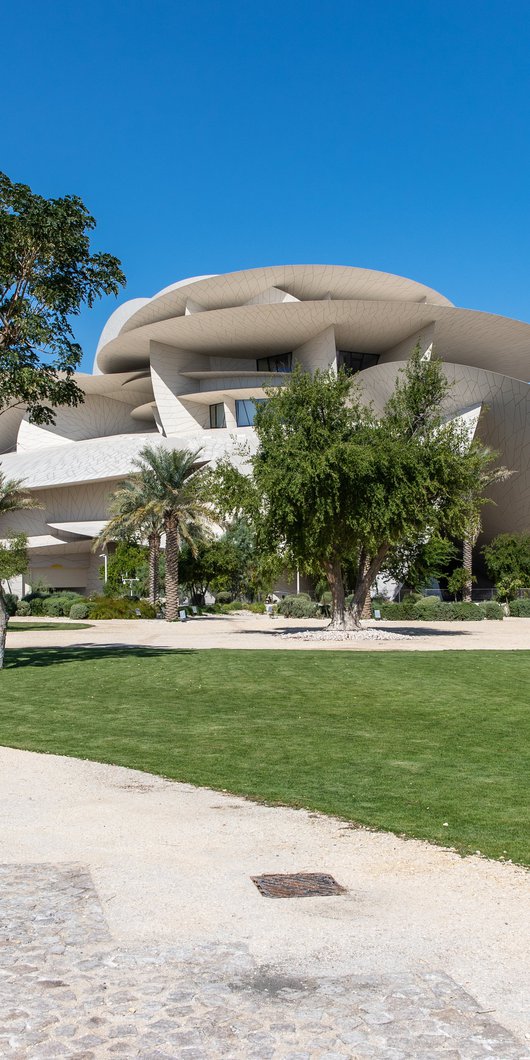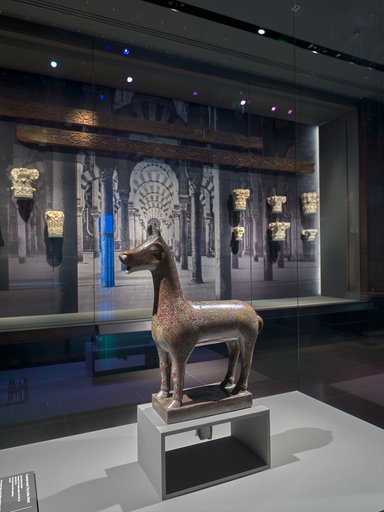Below are just a few key aspects of NMoQ’s commitment to keeping it green. To see the full list, visit the Gulf Organisation for Research & Development’s website.
Energy-efficient Design
NMoQ's striking 'desert rose' design is deceptively practical: it plays an important role in insulating the building's façade, while the interiors are supplemented by thermal mass to minimise the need for extensive energy use during the summer months. The upper façade, which represents the petals of the desert rose, also provides shade to protect the majority of the building from direct sunlight – thus further reducing the need for extensive power consumption when cooling the interiors.
Getting To and Around the Site – The Low-Carbon Way
NMoQ is a sprawling site – 1.5 million square feet to be precise. Those distances between points of interest, the car parks, the cafés and the shops require a fair amount of moving around. To assist with all that, there are numerous bicycle tracks and pedestrian walkways, as well as easy access to the metro stations, with staff at hand to help visitors make the last leg of their journey to the museum entrance – all in electric vehicles.
While all visitors are encouraged to ‘think green’ when travelling to the museum, those with eco-friendly vehicles such as electric or hybrid cars are given priority parking spaces at the site.
Widespread Praise
NMoQ is the only museum in the world to have achieved high sustainability ratings from multiple internationally recognised and independent bodies. Among these is the GSAS 4-Star rating for design and build certification. GSAS – which stands for ‘Global Sustainability Assessment System’ – is considered the gold standard in sustainability, and four stars is its highest award category. NMoQ has also received a LEED Gold certificate, among others.




